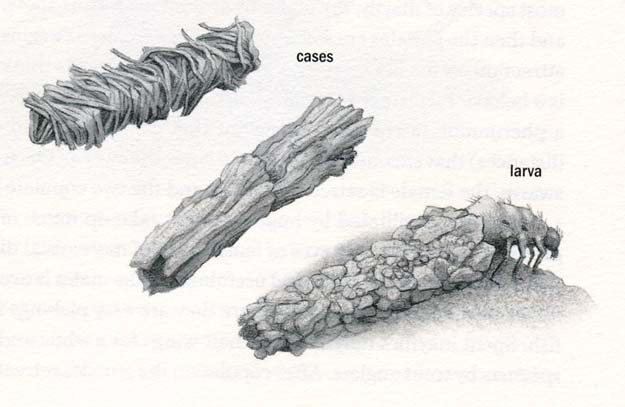Bruce M. Carlson, A Natural History of a Fisherman’s Lake, Minnesota Historical Society Press, 2007, p. 42-43.
Although the adults are distinctive because of their numbers, the larvae represent in many respects the most interesting stage of this insect’s life-cycle. In both lakes and rivers, some caddis fly larvae are net builders. They constructs small net made of silk that catch tiny bits of detritus or small animal forms that are swept into them by the currents of rivers or the waves in lakes. Others types of larvae makes exquisite cases around their bodies for both protection and camouflage and wear them like shells. The nature of the case depend upon the species and the available materials. Some caddis fly cases, which are usually less than one-half inch long, are perfectly rectangular cylinders made of wood chips, whereas others are made of grains of sand or tiny pebbles. If you look carefully at rocks pulled up from the shallow water at the beach, you may see tiny caddis fly cases (6 to 10 millimeters long) stuck to them.